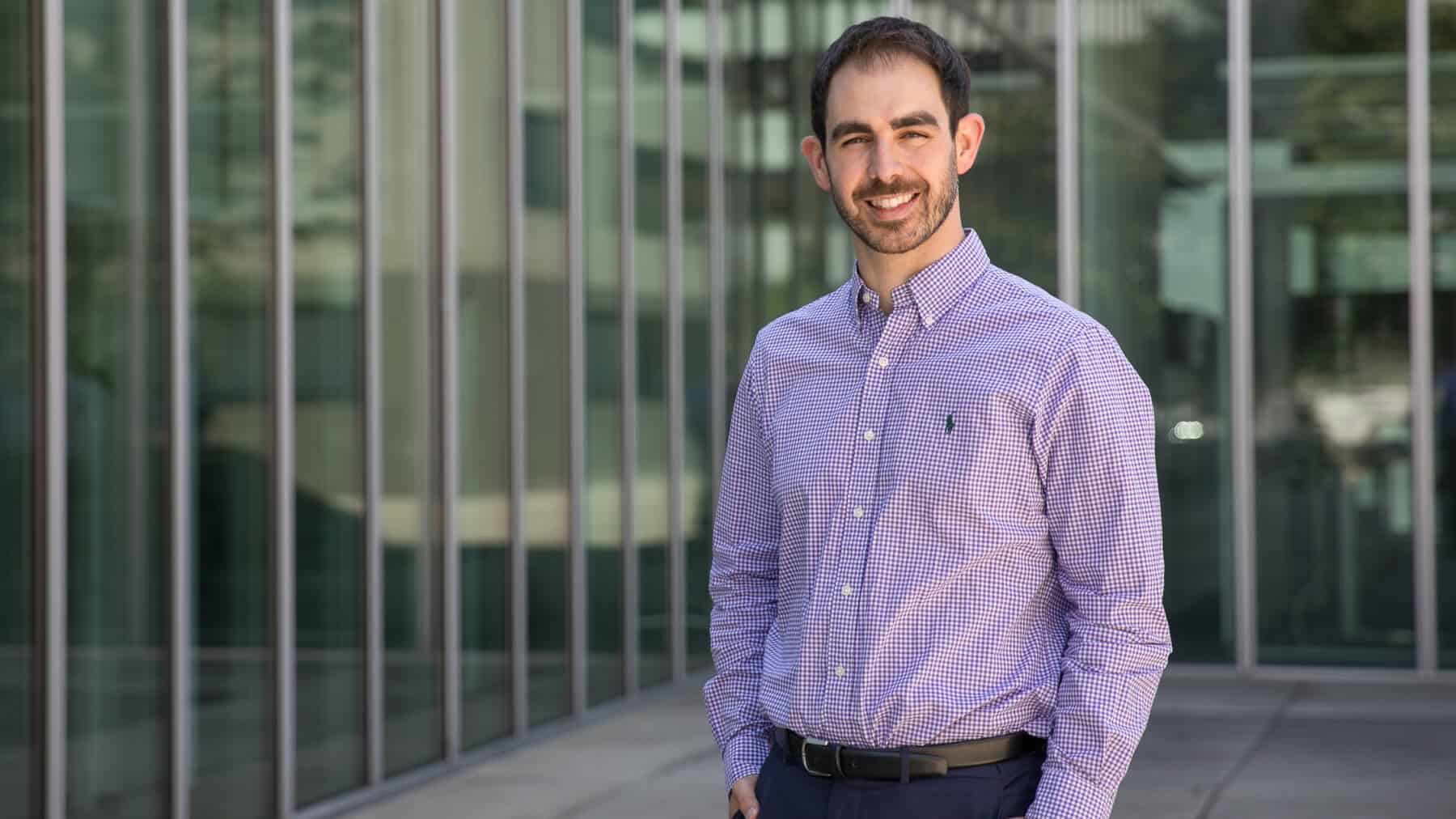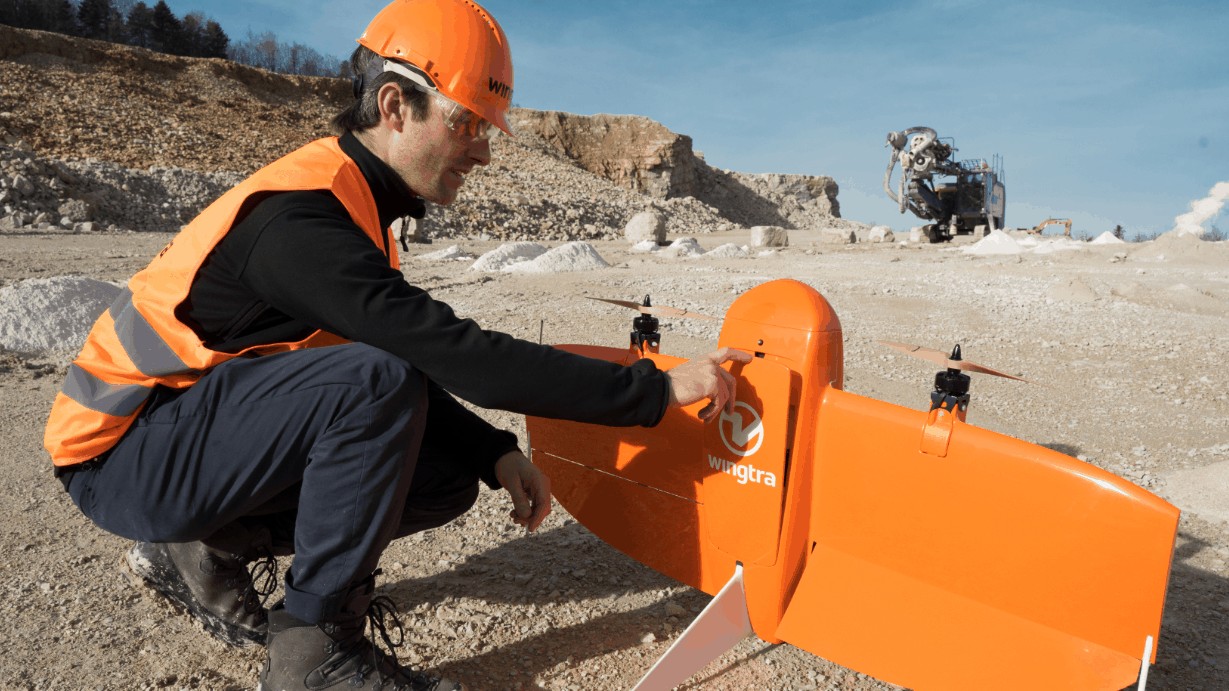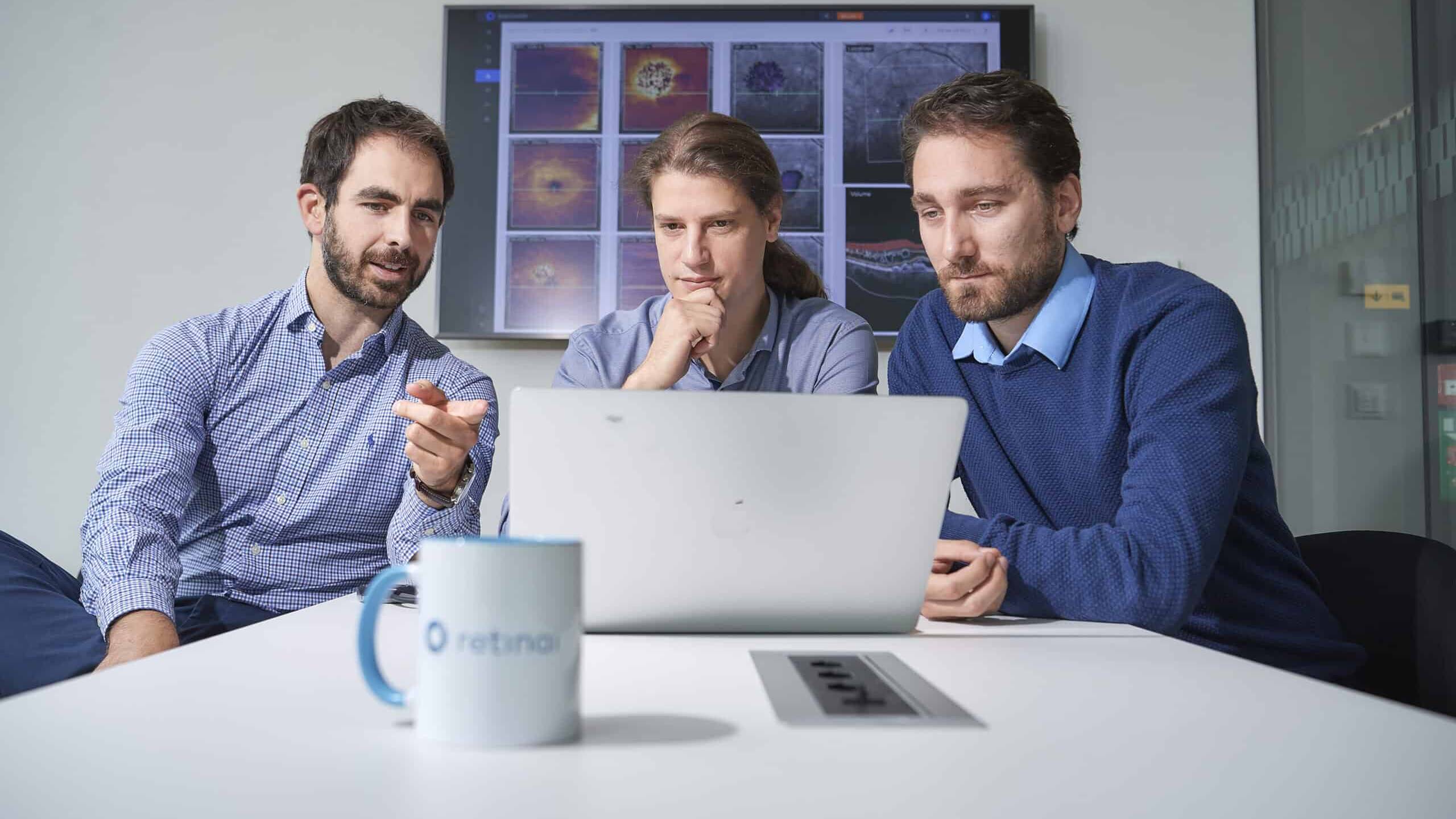Wingtra’s COO Cyril Halter has the challenging job of ramping up the startup’s drone manufacturing capacity. Why he’s the right person to do it.
The orange Wingtra drones populate the skies around the world. They have mapped mines in Serbia and Namibia, surveyed glaciers in Greenland and helped count endangered sea animals off the coast of Australia. The precise measurements they take from far above, the speed with which they cover large areas, the astonishing ability to fly like a plane and land like a helicopter – all these traits look natural when you see the drone in action. But they are a lot more difficult to achieve than one thinks.
Along the same line, Cyril Halter meets us at the entrance of Wingtra’s office with an unassuming greeting. He joined the company in 2018 in the role of Chief Operating Officer and is in charge of production. When sales grow from 0 to CHF 10 million in just two years, the production ramp-up is a challenge worthy of a former flight test engineer, successful startup co-founder, and EPFL-trained physicist.
“Managing a company is like managing a flight. You have this huge amount of information coming at you”, says Cyril. The speed with which you have to take a decision – is it two seconds or a month? – informs how you filter and process that information. Cyril is certainly used to moving fast. In the position of COO, he built up Sensefly from two employees to over a hundred in four years. Cyril co-founded the fixed-wing drone manufacturer in 2010 and later, when it was the market leader in its segment, sold it to the French listed company Parrot. Cyril was trained as a commercial pilot at Swissair, tested helicopters for the Swiss defense procurement office armasuisse and still is a helicopter mountain pilot today. Everything he ever did is related to a simple formula, he says amused: “Somehow it has to fly”.
Growing fast
The offices of Wingtra, near the base of a local mountain range in the south of Zurich, have a distinct alternative and laid-back feel to them. In the lab where R&D tinkers, it’s even downright chaotic at certain times. “Look at that cool wind tunnel we built out of cardboard tubes!”, mechanical intern Marco points out. Creative chaos and the ability to try out new things quickly is necessary for R&D, but also the exact opposite of what production is about, says Cyril, namely, reproducing a prototype thousands of times reliably and with precision. This is why he moved the production across the street into a different building as one of the first things when he started.
As we walk to the other building, Cyril talks about the challenge of managing the expansion of Wingtra. In April 2018, when he joined, the company had 35 employees. Now it is at 70. This year it aims for production around four times as high as last year and even more next year. Cyril will need more space in the future, but because of the elevated rents, he can’t just rent 2000 square meters as a reserve. (In Zurich, the median rent for office space is above CHF 300 per square meter per year). “When you grow as fast as we do, you always need to have not just a plan B, but also a plan C and D.”, he says with a laugh.
Teambuilding instead of surfing
For businesses, having options is a necessity. For individuals, it is a privilege. After he successfully sold Sensefly to Parrot, Cyril was enjoying flying and surfing for a while. “I needed a break back then”, he says. But after a while, he came to realize that something was missing with this careless lifestyle. Building a team on a powerful technological base is a very rewarding task, he says. And it’s the reason he joined Wingtra, a firm he sees uniquely positioned to benefit from the market’s hunger for ever more data and accuracy. And work offers more excitement than just mere relaxing. “I never know what kind of headache I will have to deal with tomorrow, and I love it”, Cyril replies with a grin.
As we enter the production floor, it becomes obvious that there are several potential headaches tied to producing the orange flying high-tech apparatuses at scale. The drone’s body is made of lightweight composite material. The production of this part is outsourced to specialist suppliers. In the beginning, there was just one, because the molds needed to cast a custom-made form are quite expensive. But having just one supplier makes you vulnerable.
All in all, Wingtra buys around 300 different components, some of them custom-made, others off the shelf, from all around the world and assembles them here in Switzerland. Lead times vary from a few days for some simple screws to almost a year for the custom-made smart batteries. That makes robust supply chain management necessary. In the early days it was enough to monitor the levels of supplies once per month, now these figures are needed daily, Cyril explains. With the inventory growing, the need to manage how much cash is bound in it increases as well.
Tested in Switzerland
Four people work in the important supply department. What would happen if the company ran out of lithium batteries or propellers one day? “This is my worst fear. I’d have to sit down, drink a coffee and think”, the COO says, and his friendly face darkens with tension. His main skill is to avoid such a situation, of course, and if such a problem came up nonetheless, to react fast and solve it.
We peek over the shoulders of two employees that are busy connecting cables inside half-assembled drones. The current pace allows Cyril to build a little bit of an inventory. Last year they just had to ship every finished drone immediately because of the strong demand. With the current setup, Wingtra can ramp up production by around 50%. After that, additional production steps will be outsourced, but assembly and testing will always be done in Switzerland, Cyril says. It needs to be done diligently and close to the engineering department, which can troubleshoot if necessary.
After assembly, every single drone is actually tested twice: first in a so-called “string test”, without the expensive payload of professional cameras, and later in the completely finished state. Luckily, just behind the office building, there is a large meadow, where the cities dog owners like to walk their animals. Every now and then, an orange drone completes a test flight in a safe distance from the walkers.
At the moment, the current model of the WingtraOne is the V2, the second version of the drone. Incremental improvement is the way to go, explains Cyril. Wingtra is now leading the market for vertical take-off and landing drones and can improve on sensors, electronics, and software, without changing the general appearance of its drone. A product variant, which allows precise georeferencing with a GPS correction technology called PPK, looks almost the same as the basic variant, apart from a bulge that covers a larger antenna. The slender design doesn’t show how much work was put into it. To get to a comparable product from scratch would cost a competitor a fortune, and would keep a dedicated team busy for years, estimates Cyril. And even that wouldn’t be a guarantee that the market would accept the product. No one was able to challenge SenseFly with the same technological approach.
There is still much industrialization work to do. Cyril shows us two variants of a small component, one made from composite material, the other from thermoformed plastic, which is much easier to manufacture. “I knew exactly the right guy for this job, he worked with Airbus components previously but was in South Africa. So I called him and said that I needed him in Zurich”, Cyril says. In general, he hires for the character and skills, not for the diploma, because the most important determinant of success is a cohesive team, he adds.
One floor below the assembly is fulfillment, where the drones are prepared for shipment around the world. Another source of headaches for Cyril. In the beginning, some drones broke because they were handled roughly by transport firms. The team improved the hard case the drone is shipped in. But some countries still aren’t easy to ship the product to, explains Larissa, who deals with customs. Together with the drones, she usually includes marketing materials – and a few Swiss candies. In one market, officials insisted she must fill out three pages with questions about the sweets’ composition. She prefers not to include the candies for this market anymore, she says.
At the end of our tour, Cyril stands between the racks where the finished drones are lined up. “I really like the orange color of the drones. It’s the color of flight test crew too, you know”, the COO says. In markets around the world, Wingtra’s drones have passed harsh practical tests with flying colors.
Written by
WITH US, YOU CANCO-INVEST IN DEEP TECH STARTUPS

Verve's investor network
With annual investments of EUR 60-70 mio, we belong to the top 10% most active startup investors in Europe. We therefore get you into competitive financing rounds alongside other world-class venture capital funds.
We empower you to build your individual portfolio.
More News
26.06.2019
RetinAI (Eye Care):
CHF 2.3m
Pre-Series A
RetinAI has raised CHF 2.3 million from Verve Ventures and b-to-v Partners. Verve Ventures contributed CHF 0.6 million to this round.
11.06.2019
Wingtra (Drones): CHF 10m Series A
Wingtra has raised CHF 10 million in a Series A financing round from Verve Ventures, Helvetica Capital, ZKB, and private investors.
10.04.2019
“We’re democratizing the access to health care”
RetinAI brings AI to eye care. We talked to the co-founder and CEO Carlos Ciller about having Microsoft and Google as competitors, eye scanning devices in your pocket and Berne as the headquarters for their startups.
Startups,Innovation andVenture Capital
Sign up to receive our weekly newsletter and learn about investing in technologies that are changing the world.




